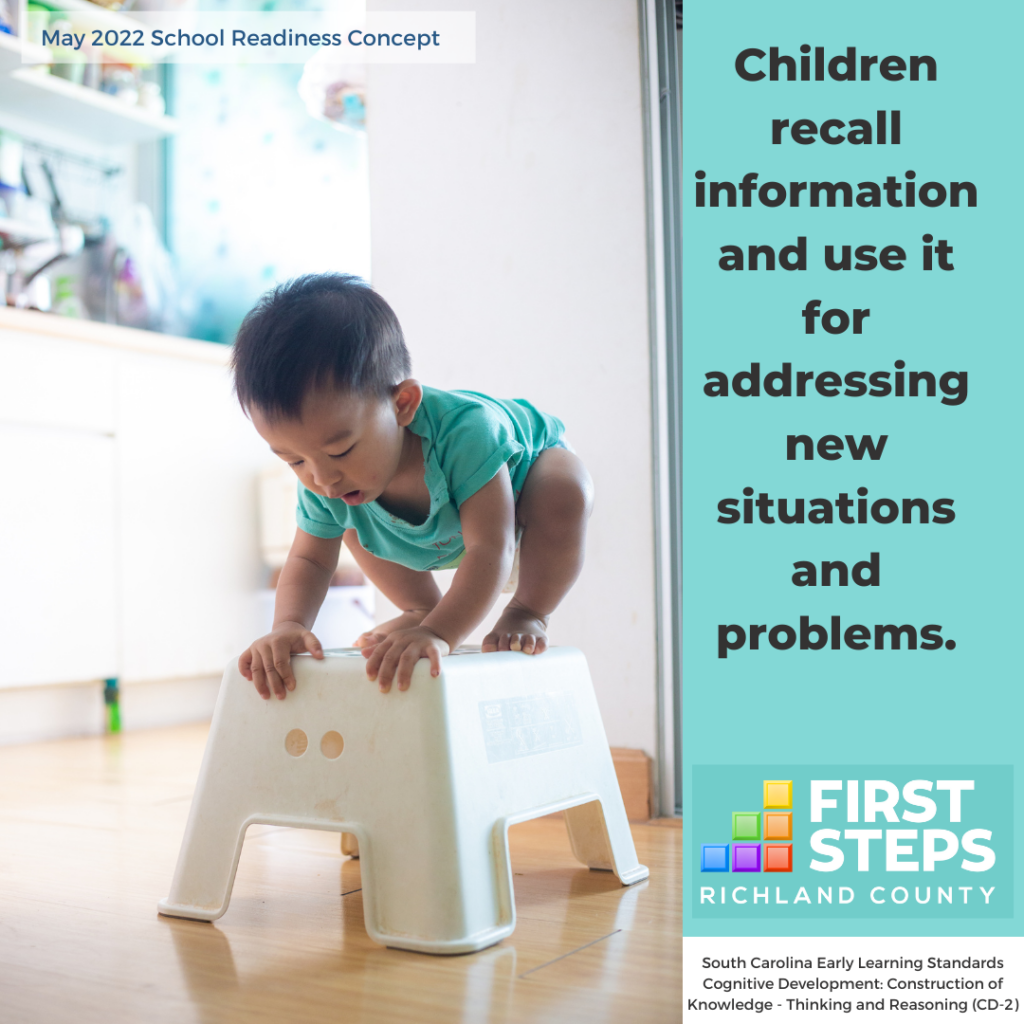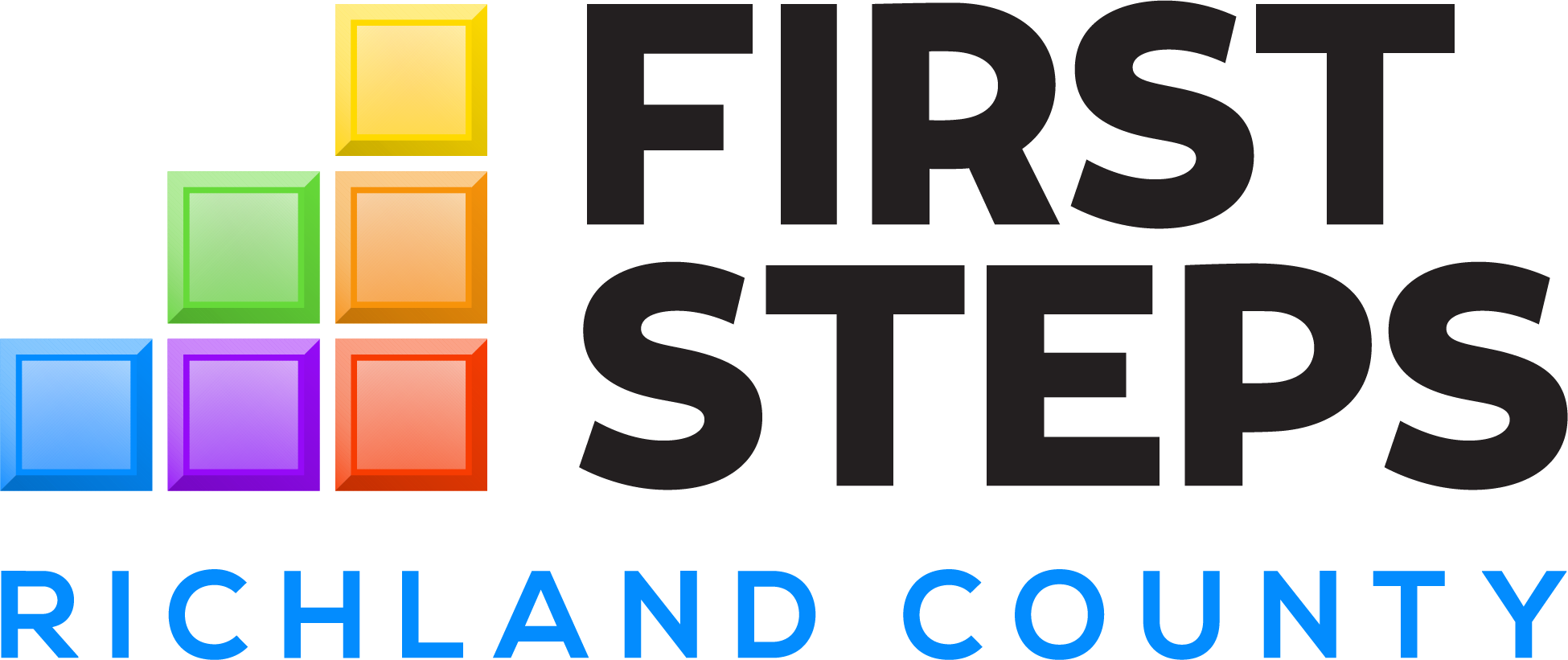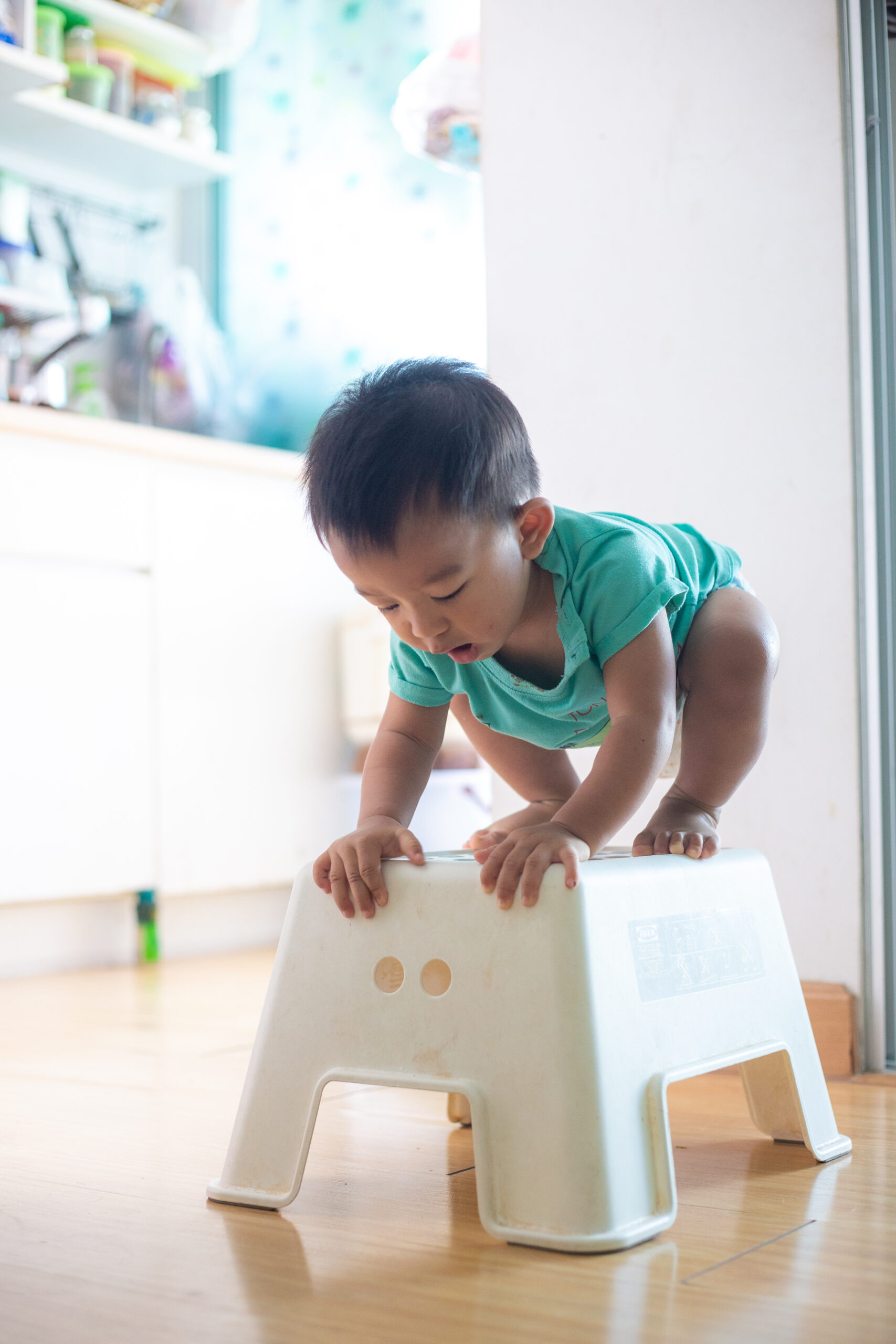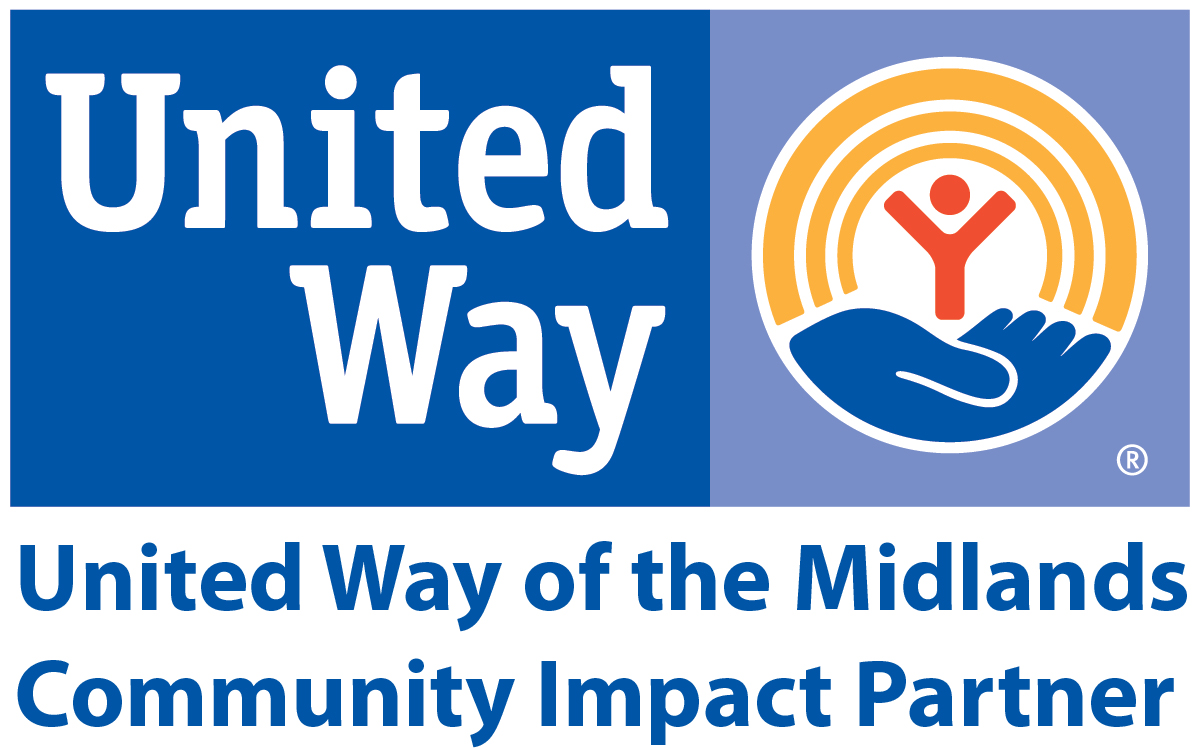
Each month, Richland First Steps selects one school readiness goal from the SC Early Learning Standards (SCELS) to spotlight throughout our programs for children, families, and child care providers.
This month’s concept comes from the Cognitive Development domain of the SCELS. Like all of the standards, there are developmental indicators that show a child’s progress on this goal at each stage:
Infants (Birth to 12 months)
- Search for objects that are hidden or partly hidden.
- Respond differently to familiar vs. unfamiliar people, objects, and situations (reach for new interesting toy instead of old familiar toy; move toward familiar caregiver but hide head on a family member’s shoulder when new person comes near).
- Anticipate routine events (smile, wave arms and legs, move toward adult holding bottle).
- Repeat an action to make something happen again (make sounds when music stops, bounce up and down to get adult to continue “horsey ride”).
- Observe and imitate sounds, movements, and facial expressions, including things they have seen in the past or in other places.
Younger Toddlers (8 to 21 months)
- Search in several places where an object has been hidden recently.
- Notice a change in familiar objects, places, or events (frown at family member with a new haircut, look for furniture that was moved).
- Perform routine events and use familiar objects in appropriate ways (carry clean diaper to changing table, talk on phone, “water” plants with pitcher).
- Imitate behaviors they have seen in the past or in other places.
- Identify objects and people in pictures by pointing or looking.
Older Toddlers (18 to 36 months)
- Search for objects in several places, even when not seen recently.
- Show they remember people, objects, and events (tell about them, act them out, point out similar happenings).
- Show they remember the order in which familiar events happen (finish line in story or song, get ready to go outdoors after snack).
- Choose objects to represent something else with similar features during play (block for cell phone, large sheet for tent).
Younger Preschoolers (36 to 48 months)
- Recognize whether a picture or object is the same as or different from something they have seen before.
- Apply what they know about everyday experiences to new situations (look for the seatbelt on the bus).
- Describe or act out a memory of a situation or action, with adult support.
- Make predictions about what will happen using what they know.
- Introduce ideas or actions in play based on previous knowledge or experience.
- Ask questions about why things happen and try to understand cause and effect.
Older Preschoolers (48 to 60+ months)
- Demonstrate their ability to apply what they know about everyday experiences.
- Describe past events in an organized way, including details or personal reactions.
- Improve their ability to make predictions and explain why things happen using what they know.
- Introduce more elaborate or detailed ideas or actions into play based on previous knowledge or experience.
- Try to reach logical conclusions (including conclusions regarding cause and effect) about familiar situations and materials, based on information gathered with their senses.
- Speculate and imagine what might happen next.
Learn more:


